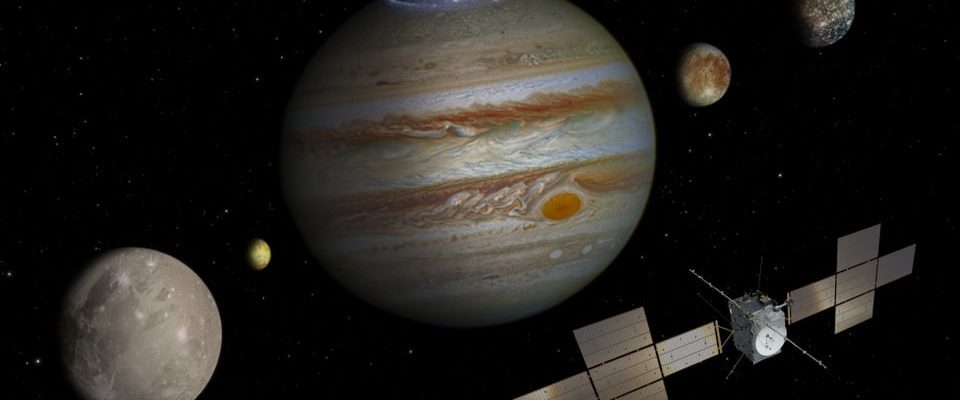Contents
ESA is daring to go further than ever before. Today the probe Juice starts its eight-year journey to Jupiter.
2031 will be the juice probe be where she needs to be. 700 million kilometers from Earth, in a world of extremes. Extremely cold, extremely dark and extremely irradiated. “Jupiter is a giant particle accelerator,” says astrophysicist Dieter Wurz from the University of Bern.
Hardships for the electronics
A Jupiter day lasts only ten hours. The gas giant is a whirling colossus that generates a very large amount of radioactivity with its rapid rotation and its powerful magnetic field. Absolutely deadly for us humans and a great danger for the electronics.
The electronics of the probe is therefore specially built to be radiation-proof and protected by a radiation detector constructed at the Paul Scherrer Institute in Villigen, Aargau.
Collect data and light in the dark
As an artificial moon, Juice will roam the dark Jupiter system to measure gas masses, magnetic fields and radiation. With a minimum of energy.
The 85 square meter solar panels have to pull every ounce of light out of the darkness, says Audrey Vorburger. She is also an astrophysicist at the University of Bern and, like Peter Wurz, has been involved in Juice since the first planning meetings. The solar panels deliver about 900 watts. On Earth it would be 30,000 watts. “You can just run a hair dryer on the lowest level with it.”
Ice moons are cosmic freezers
Juice, as liquid as that sounds, focuses on frozen things: the three large ice moons Ganymede, Europa and Callisto. The term Juice stands for «Yupiter ICy Moons Eexplorer».
Legend:
Visible in the image: Ganymede in the foreground, Callisto on the far right and Europa in the center right. The volcanically active moon Io is also visible, to the left.
NASA, ESA, CSA, STScI, J. DePasquale (STScI)
The three icy moons make their rounds around Jupiter in the radiation hell, which can be as cold as -170 degrees. Covered by ice sheets up to 150 kilometers thick. It preserves the birth history of our solar system. “The frozen chemistry gives us a glimpse of 4.5 billion years ago,” says Peter Wurz, head of the Bern Juice team.
Hard shell soft core
Juice is meant to decode this primordial cloud chemistry and the soft under the hard shell. “In the vast water oceans, there could be simple life, shielded from radiation by the thick ice mantle.”
And most likely in Europe. Because the ocean there is deep, big and old and because it hits rock directly on the bottom, says Audrey Vorburger. Rock from which minerals are released at warm springs, which could give rise to and nourish life.
Sniff out possible life
Juice will get within 200 kilometers of the icy moon and, if lucky, will cross an exhaler of Europa. One of the geyser-like water fountains that Europe forces through cracks in its ice sheet. That is the great hope, says Peter Wurz: “In such a drizzle, we can with our Mass spectrometer NIMdirectly measure the chemical composition of the ocean, and measure traces of life in the form of metabolites – if life is present.”
Juice will be making its rounds in the Jovian system for three years – and then, when it runs out of light and energy, it will shatter on Ganymede, the largest moon.
